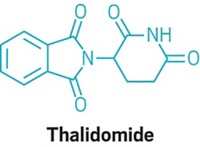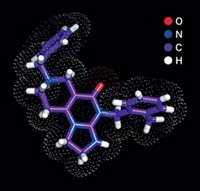Advertisement
Grab your lab coat. Let's get started
Welcome!
Welcome!
Create an account below to get 6 C&EN articles per month, receive newsletters and more - all free.
It seems this is your first time logging in online. Please enter the following information to continue.
As an ACS member you automatically get access to this site. All we need is few more details to create your reading experience.
Not you? Sign in with a different account.
Not you? Sign in with a different account.
ERROR 1
ERROR 1
ERROR 2
ERROR 2
ERROR 2
ERROR 2
ERROR 2
Password and Confirm password must match.
If you have an ACS member number, please enter it here so we can link this account to your membership. (optional)
ERROR 2
ACS values your privacy. By submitting your information, you are gaining access to C&EN and subscribing to our weekly newsletter. We use the information you provide to make your reading experience better, and we will never sell your data to third party members.
Biological Chemistry
Protein Synthesis Nipped in the Bud
Inhibitor of initial step of protein biosynthesis could lead to new anticancer or antiviral drugs
by Stu Borman
December 19, 2005
| A version of this story appeared in
Volume 83, Issue 51
Protein biosynthesis in cells begins with translation initiation, an extraordinarily complex process in which a ribosome assembly binds to an mRNA gene transcript, recognizes its start codon, and begins to translate it into protein.
Two research groups, working independently, have now found that pateamine A, a marine-sponge-derived natural product, inhibits eukaryotic translation initiation in vivo.
Both groups agree that the activity of pateamine A is novel in that it's the first small molecule known to bind specifically to eukaryotic initiation factor eIF4A in vivo. But they disagree on exactly how this binding interaction interferes with translation initiation and have proposed alternative mechanisms.
The studies have potential implications for the development of anticancer or antiviral drugs and could lead to a better understanding of initiation, a focus of widespread current research interest.
The pateamine A findings were reported this summer by biochemistry professor Jerry Pelletier of McGill University, Montreal, and coworkers (Proc. Natl. Acad. Sci. USA 2005, 102, 10460). And this month, chemistry professor Daniel Romo of Texas A&M University, pharmacology professor Jun O. Liu of Johns Hopkins School of Medicine, and coworkers report related findings (Mol. Cell 2005, 20, 709).
A specialist in eukaryotic translation mechanisms, associate professor of molecular biology and genetics Christopher Hellen of the State University of New York Downstate Medical Center, Brooklyn, comments that the studies represent a breakthrough in the field. "They are at the leading edge of developments to identify and optimize small-molecule inhibitors to regulate translation of specific eukaryotic mRNAs, or classes of mRNA, for therapeutic purposes, most notably with respect to tumor suppression but also to inhibit specific viral infections, such as hepatitis C virus," he says.
Because pateamine A can be absorbed and used by the body "and can be derivatized and still retain activity," Hellen says, "derivatives might be useful in combination with other small-molecule inhibitors that target related steps in translation initiation and its regulation." For example, "rapamycin and its derivatives, which are promising therapeutic agents with immunosuppressant and antitumor properties," might complement the action of pateamine A, he says. Rapamycin inhibits translation indirectly and not at the initiation stage.
The two teams discovered independently that pateamine A inhibits translation initiation by binding to eIF4A, a constituent of a larger protein complex (eIF4F) that plays an essential role in initiation. The binding enhances eIF4A's inherent enzymatic activity and inhibits the initiation process in which it participates. The compound "will undoubtedly be useful in research applications, helping to give insights into poorly understood steps in the initiation process," Hellen says.
Théophile Ohlmann, a specialist in eukaryotic and viral translation at Ecole Normale Supérieure, Lyon, in France, notes that pateamine A's activity represents "the first time that a chemical inhibitor of translation acts in such a very specific way and without disturbing any other steps of translation. These results are of great interest not only for people working in the field of translation but also for other groups interested in blocking gene expression at the translational level."
In translation initiation, the 40S ribosome, one of two ribosome subunits, binds to a protein-tRNA complex to form a 43S complex. This binds to a complex of mRNA and initiation factors (including eIF4A) to form 48S. After the mRNA sequence is scanned and its start codon is recognized, the 60S ribosome, the other ribosome subunit, joins the party. The resulting 80S complex then carries out translation, producing a protein.
Pateamine A inhibits translation initiation by binding to eIF4A and activating its enzymatic activity. But the two studies differ slightly on the precise mechanism of inhibition. "Both suggest there is a defect prior to assembly of the true 48S complex at the initiation codon," Hellen says. Whereas Pelletier's group "suggests there is a defect in recruitment of the preceding 43S complex to mRNA," the Liu-Romo group "suggests a defect soon afterward, during scanning for the initiation codon or, less likely in my opinion, during initiation-codon recognition."
The Liu-Romo team also found that pateamine A promotes formation of stress granules, which are aggregates of proteins (such as translation factors) and mRNAs that form in cells under stress conditions. "The mRNAs in stress granules appear to be in dynamic equilibrium with mRNAs in ribosomes, and the connection between them is a very active topic of investigation," Hellen says.
The two groups discovered pateamine A's activity and mechanism by different routes. Pelletier and coworkers had no prior interest in pateamine A. To identify translation initiation inhibitors, they screened a library of promising compounds and found pateamine A among the hits.
Romo and his group, on the other hand, had been studying pateamine A for the better part of a decade. They had achieved the first total synthesis of the natural product (J. Am. Chem. Soc. 1998, 120, 12237) and had been synthesizing analogs and derivatives and testing them for improved activity. The Romo and Liu groups then collaborated to study the mechanism of pateamine A's known immunosuppressive activity, and researchers in Liu's lab discovered the compound's effect on translation initiation in the course of that collaborative study.
"Given the pronounced effect of pateamine A on the fundamental process of protein translation required by all cells and the fact that it seems to inhibit all cell lines we have tested, it is not likely to be a useful immunosuppressive agent with sufficient selectivity" for immune system cells, Liu says. "Its immunosuppressive activity will likely be secondary to its inhibition of translation initiation and the consequent impact on cell cycle and survival."
The potential pharmacological activity of pateamine A "may be exploited in the clinic," Liu says. "The high potency of pateamine A against a wide array of tumor cell lines, along with the fact that it induces stress granule formation," suggests that the natural product and its analogs, such as a more synthetically accessible derivative, desmethyldesaminopateamine A (J. Am. Chem. Soc. 2004, 126, 10582), have potential as lead compounds for anticancer and antiviral drug development.







Join the conversation
Contact the reporter
Submit a Letter to the Editor for publication
Engage with us on Twitter